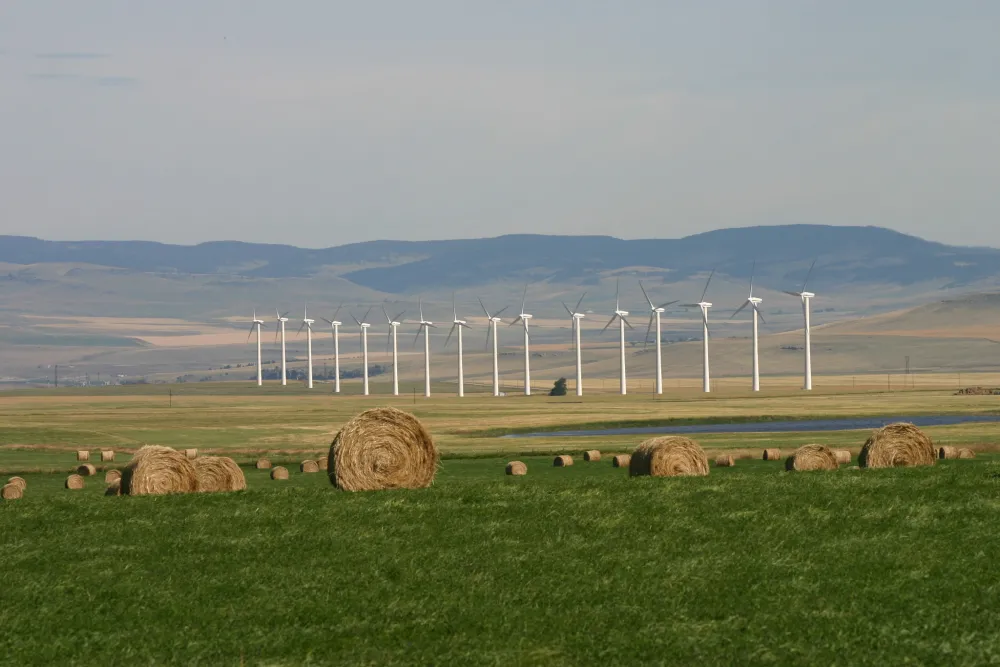On May 18, the International Energy Agency (IEA) will release a special report, Net-Zero in 2050: A roadmap for the global energy system. This will be the first time that the agency will publish a full scenario describing how the global energy system could achieve carbon neutrality by 2050.
The publication of the report is part of the lead up to the UN Climate Change Conference (COP 26) in November so that countries are provided with a tool to support the rapid reduction of greenhouse gas (GHG) emissions necessary to limit global warming to 1.5 degrees. GHG emissions associated with energy production account for approximately 35 per cent of global emissions. Adding the energy used for transportation and in buildings (20 per cent) shows that these three sectors alone account for 55 per cent of global emissions. This means that to limit global warming, we will need to quickly decarbonize global energy systems.
In creating a net-zero energy roadmap to 2050, the IEA report will contribute much-needed analysis and vision for how this goal can be accomplished. Charged with producing the influential World Energy Outlook, the IEA has long been criticized for conservative outlooks that underestimate the rate of adoption of clean energy and fail to provide a clear pathway for keeping global warming below 1.5 degrees.
Last year, the World Energy Outlook 2020 presented an initial net-zero scenario but the modelling projected out to 2030 rather than 2050. This year, the report will deliver a scenario that depicts energy supply and demand trajectories to 2050.
Is achieving net-zero emissions the same as limiting global warming to 1.5 degrees?
A significant feature of Net-zero in 2050 is that it will show how global energy systems can achieve net-zero emissions by 2050 and how to ensure that the pathway is consistent with 1.5 degrees of warming. While limiting warming to 1.5 degrees requires net-zero greenhouse gas (GHG) emissions by 2050, the inverse is not true. Global warming is determined by cumulative emissions in the atmosphere. Net-zero targets (in general) relate the balance of emissions at one point in time. If global emissions remain high for another decade or two and then decline steeply to net-zero in 2050, we will not be able to limit global warming to 1.5 degrees. It’s not just the destination that matters, the journey to net-zero is critical.
While limiting warming to 1.5 degrees requires net-zero greenhouse gas (GHG) emissions by 2050, the inverse is not true.
The IEA’s Net-zero in 2050 report will also address some of the 2015 UN sustainable development goals (SDGs). Past reports have presented scenarios that aligned with 2 degrees of warming and illustrated how emissions reductions in the energy sector can contribute to cleaner air and greater access to affordable and reliable clean energy. This year’s report will present scenarios that align with 1.5 degrees of warming. Also, connecting carbon emission reductions with environmental and social justice goals is a critically important reminder that mitigating global warming can lead to a healthier, more equitable world.

Why we need a net-zero pathway for the energy sector
We know that limiting global warming to 1.5 degrees will require immediate and rapid transformation in the energy sector. Describing how this transformation could occur will provide important information on the pace and scope of change required.
 Producing a roadmap to net-zero for the energy sector serves several important purposes. First, doing so informs governments, businesses, and investors seeking to understand climate risk and make decisions and investments that are consistent with a climate-safe world.
Producing a roadmap to net-zero for the energy sector serves several important purposes. First, doing so informs governments, businesses, and investors seeking to understand climate risk and make decisions and investments that are consistent with a climate-safe world.
Second, it will offer details on the extent to which we can rely on scaling up existing technologies and policies to achieve our goals. By seeing where the shortfalls are, decision makers are better equipped to identify the gaps and pinpoint areas where technological, policy, and social innovation are needed. It will also offer a basis for assessing the appropriate use of carbon removal and offsets. Both will be necessary, but decisions need to be made on the extent to which we rely on removals and offsets as well as how credits from their use will be fairly allocated.
Third, such a roadmap assists in planning for an equitable and inclusive energy transition. By showing the trajectory of the energy sector, individuals, communities, and governments will be much better positioned to plan for the transition and ensure that necessary support systems are in place.
Finally, it will help provide a vision of a more sustainable and equitable energy future. Successfully limiting warming requires confidence that transforming energy systems is possible and desirable. Net-zero pathways are simultaneously a tool for envisioning this future and for facilitating collective dialogue on how this future can and should unfold.
Five takeaways to look for in the IEA net-zero pathway report
-
The rate of decline in global demand for oil. Production of oil and gas is Canada’s largest source of emissions and represents approximately 5 per cent of Canada’s GDP. Global prices and reduced demand for Canadian resources could have an enormous impact on Canada’s GHG emissions. In a globally decarbonizing economy, a smart strategy is one that plans for the transformation of this sector to avoid economic hardships and seize on opportunities.
-
The timeline for decarbonizing electricity systems. Clean electricity will be critical to emissions reductions in transportation, buildings, and heavy industry. Limiting global warming will require cleaning up electricity grids well before 2050.
-
The scale of electrification required for buildings and transport. Net-zero will require electrification of transportation and building stock on a massive scale. The pace at which electrification must occur in these two sectors, and the implementation of policies that will make this transition possible, will provide a timetable for Canadian policy-makers.
-
How to factor in negative emissions technologies. Achieving net-zero will require the use of negative emissions technologies such as carbon capture and storage. However, directly reducing emissions must be prioritized.
-
The economic, social, and environmental benefits of transitioning to clean energy. The scope and scale of transformation will be great. But thoughtful planning will result in cleaner air, positive health outcomes, job opportunities and associated poverty alleviation, and increased biodiversity.
At the Leaders’ Summit on Climate in April, Canada declared new emission reduction targets for 2030. As we head into COP26, Canada’s Energy Regulator, the federal government, and the provinces will need to follow the IEA’s lead and model a sustainable decarbonization pathway for Canada’s energy sector.








